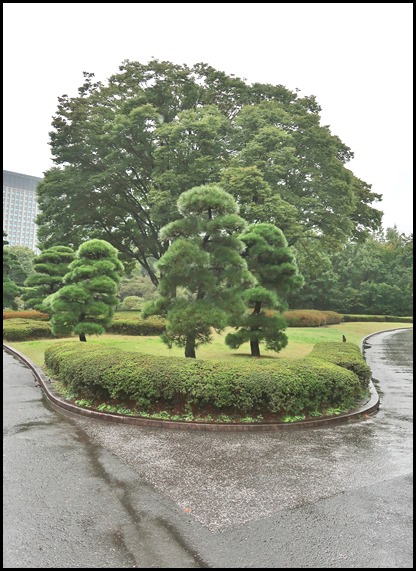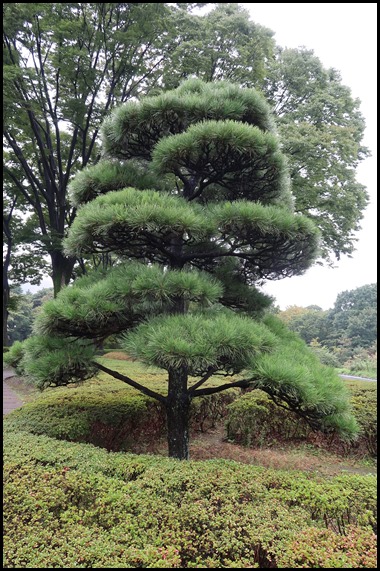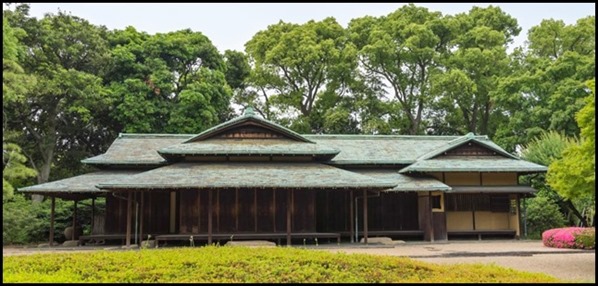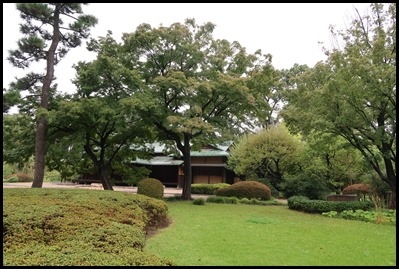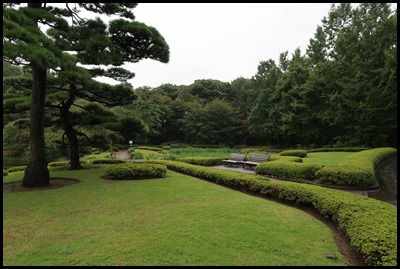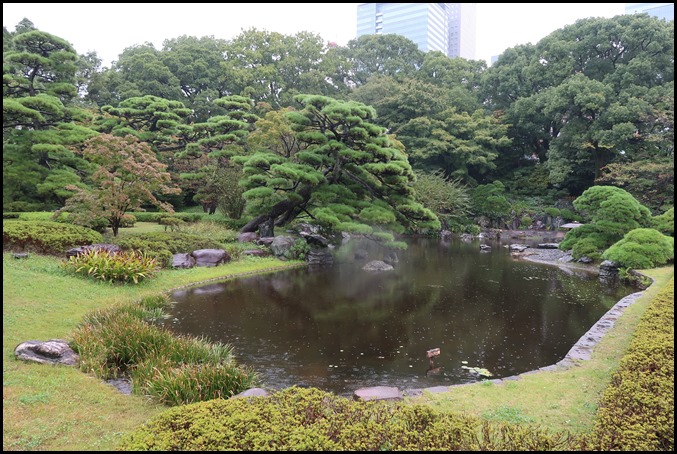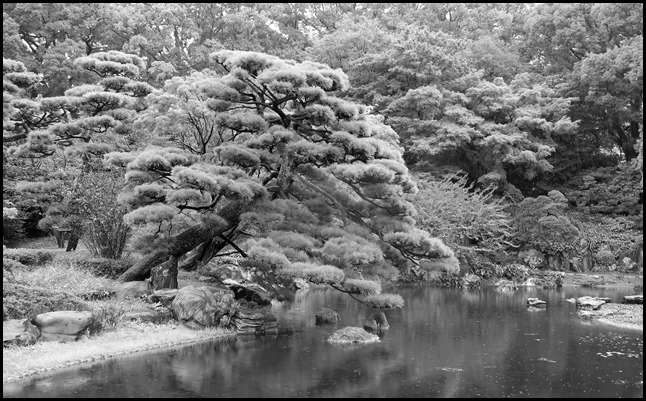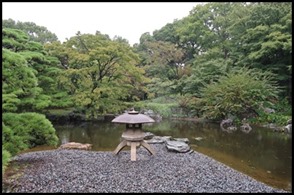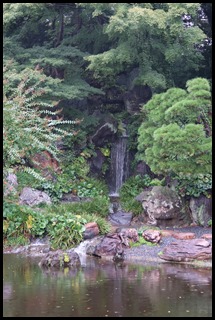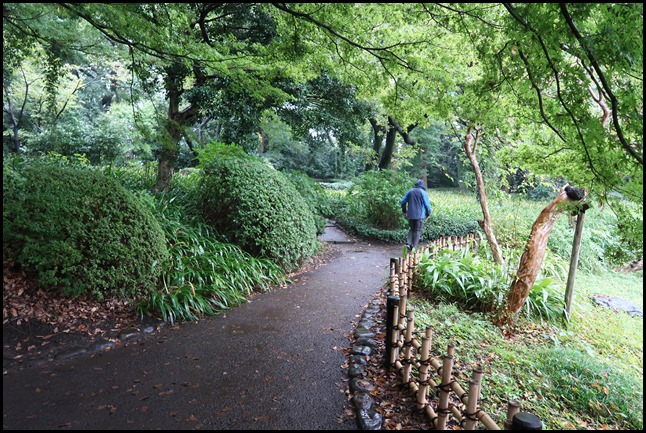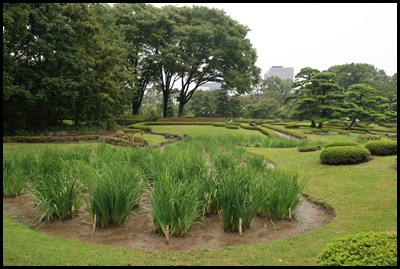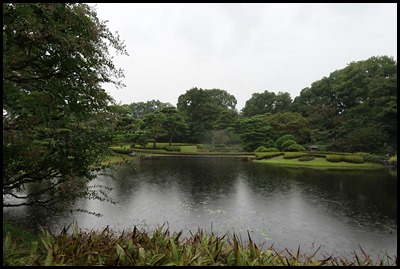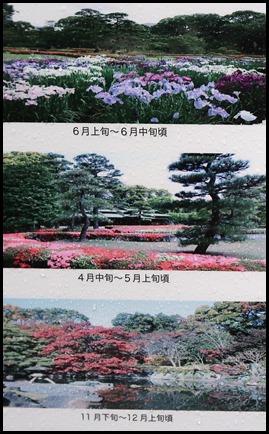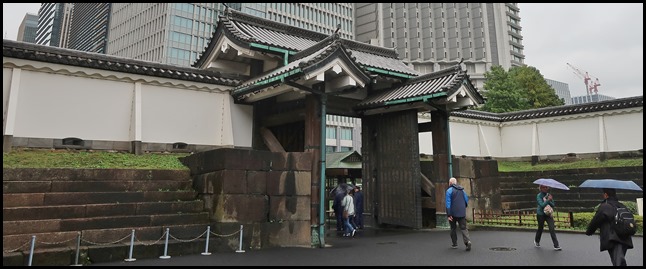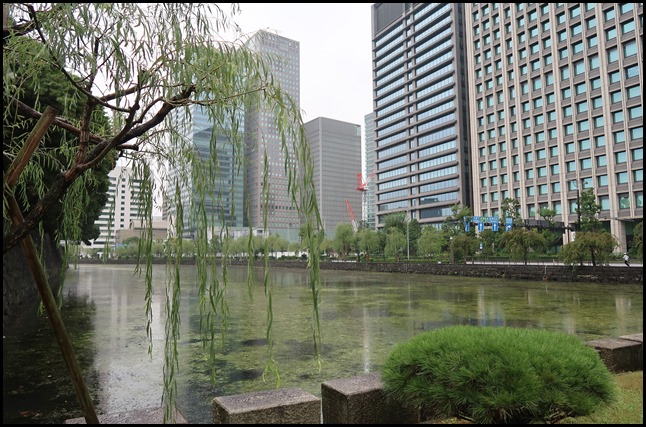East Garden 2

|
East Garden of the Imperial Palace, Tokyo – Part
Two
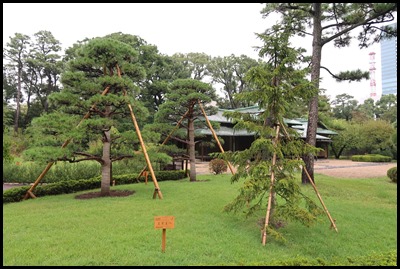 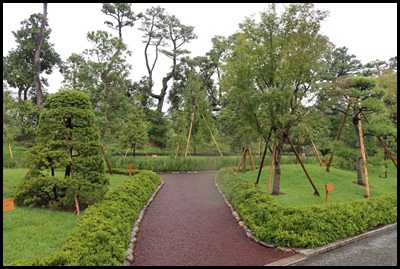
New plantings with supports to get them through the winter.
Their Majesties planted these pine trees, they were presented to them by King Carlos I and Queen Sofia of the Kingdom of Spain, who visited Japan as State Guests in November 2008.
Suwa-no-chaya (Tea House) was built in 1912 on the orders of the Emperor Mejii, the great-grandfather of His Majesty the Emperor. Originally it stood in the Fukiage Gardens, the western part of the Imperial Palace, it was transferred in 1968 to its current place to add elegance to Ninomaru Garden.
Leaving the tea house behind we were in a formal area of the garden.
There are four aquatic plants in this pond, which have become scarce in urban areas with the reclamation of ponds and swamps. Japanese Spatterdock (Nuphar japonicum) was transplanted from the pond of the Imperial Residence. They flourish from summer to autumn, covering the surface of the pond with yellow and white flowers.
So traditional, so tranquil, added to by the Dripping Millards.
Indonesian long-finned carp and Nishikigoi carp were released by Their Majesties the Emperor and Empress in 1991 and 2012. The hybrid was created at the suggestion of the Emperor.
This renewed grove was established in 2002. A streamlet was created and various trees and plants suitable for attracting insects and wild birds were planted. Some of the plants were transplanted from the Gardens of the Imperial Residence.
Such a shame the rain did not let up. Beautiful nonetheless.
The orchard contains old varieties of
fruit trees (Japanese apple, persimmon, citrus, Japanese pear, peach and plum)
once popularly cultivated for food in the Edo era (1603-1868). Some of the trees
were planted by Their Majesties in 2008.
The garden shown
through the seasons. Varieties of wild roses native to Japan and China
have been planted here. A rose is grown here that was a lovely surprise to us –
in commemoration of the 75th anniversary of the Florence Nightingale
International Foundation, a pretty pink lass. It was presented as a gift and its
saplings were planted by Their Majesties the Emperor and Empress.
The bamboo garden was established in
1996 at the suggestion of the Emperor to showcase thirteen varieties of bamboo
native to Japan and China. They were transplanted from the residential garden of
the Emperor Showa, the current Emperor’s father. The bamboos were grown there in
association with Wakatake (young bamboo), the Emperor Showa’s nickname among the
Imperial Family.
 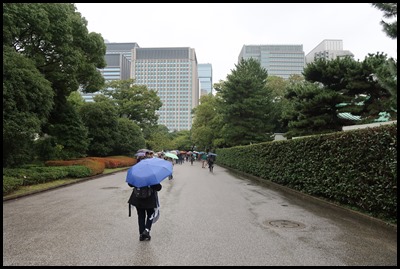 Ancient to modern.
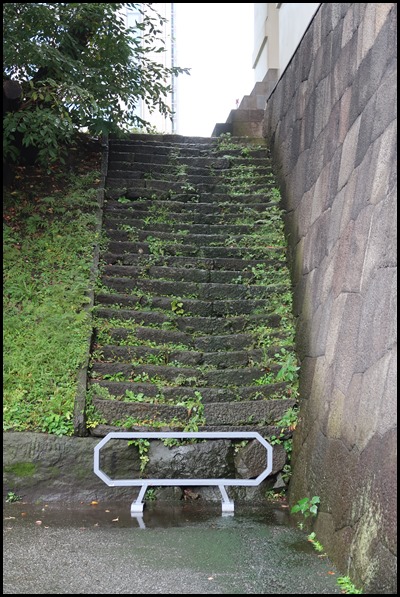 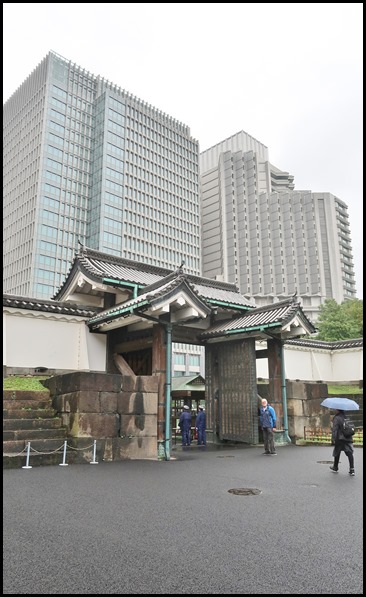 Old to new.
We had enough of the rain and decided to head back to our digs where we spent the afternoon planning our Myanmar trip. Bear leaving by the Otemon Gate which was once the main gate of the former Edo Castle. In 1620 it became square-shaped as it is now. After that it was repeatedly rebuilt and repaired, but it was burnt down by fire in World War II. The current gate was rebuilt in 1968.
Out once more in the city, we headed for the underground.
ALL IN ALL A LOVELY GARDEN FORMAL, PRETTY AND VERY WET |
